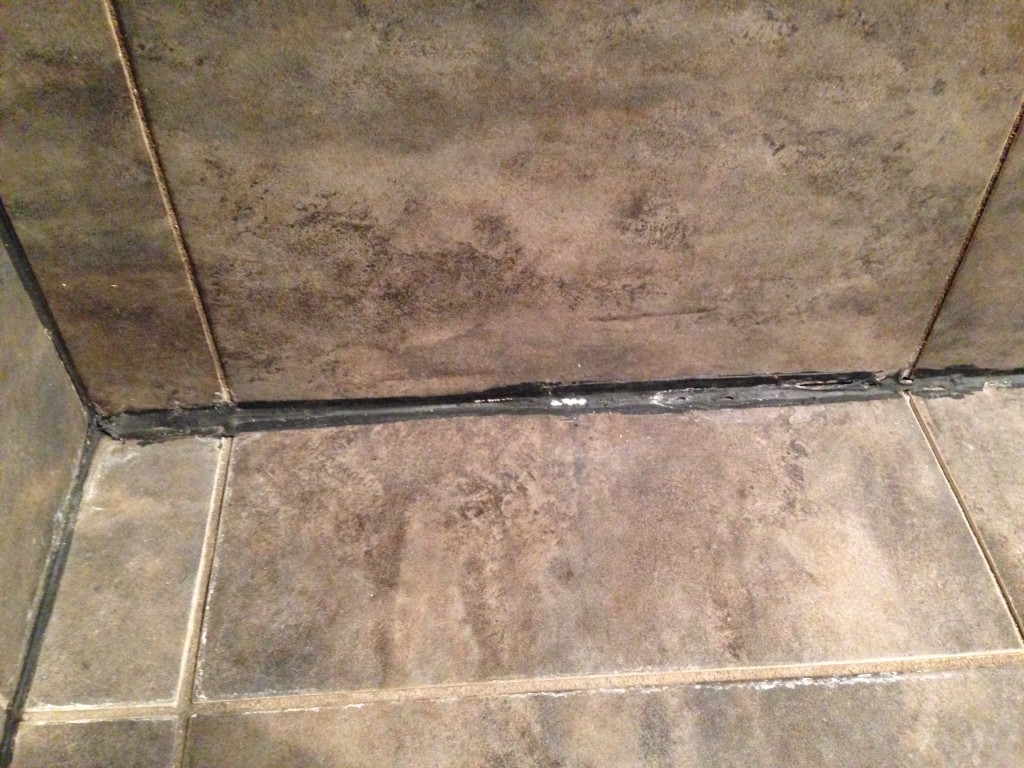Steel Column Information
The following information is relative to the conditions and legislation in place at the time this document was created (January 2020). If there has been any subsequent changes or amendments to the building legislation governing the use of and installation of Steel Columns after January 2020, then obviously these changes would not be reflected in this information and furthermore some information may not be accurate and in line with the most up-to-date legislation in place for this reason.
In view of this, we have a legal obligation to advise you, that you must not act on the information without first making further enquiries yourself, specifically in relation to what current legislation is in place for the installation of Steel Columns at a Residential Properties, in order to determine that it reflects the information we are providing in this document.
Key legislation for Steel Columns:
There are several Australian Standards that govern the manner in which Steel Columns must be designed and installed within a residential property and these are listed below.
• AS:4100 Steel Structures
• AS:4600 Cold-formed steel structures
• One other main area where guidelines and stipulations for Steel Columns is contained, is within the National Construction Code (formerly known as the Building Code of Australia), in Volume 2, section 3.4 ‘Steel Framing’.
Commonly identified Steel Column defects during our building inspections
Corrosion at base of steel columns
Where there is an inadequacy of drainage, often this will result in excessive moisture being present in subfloor areas. This can frequently create situations where moisture can be trapped at the base of the columns, which will in turn ensure the advancement of corrosion at the base of the column. Where Steel Columns are used as isolated pier, structural footings for a property, it is critical that the best standards of drainage be in place, in order to avoid these risks from occurring.
Where corrosion is identified at the base of steel columns, and where it is possible to do so, and assuming full penetration rust is not present, any existing rust should be cleaned thoroughly with a wire brush. This should be followed with the base of the column being painted with an application of ‘Rust Converter’ or corrosive resistant zinc rich paint e.g. ‘Kill Rust’.
In any situations where the ground contours slope towards any steel columns and it is likely that they will be subject to ongoing moisture exposure, it is good building practice to build up a small amount of mortar/concrete at the base of the steel columns (approximately 200 mm high and in the shape of a mini volcano) as this will allow for any excessive moisture not to be retained at the base of the columns and adversely directed away from them. This proactive measure will certainly reduce the risks of corrosion developing.
Where Steel Column footings are used in close proximity to saltwater swimming pools, we normally identifying advanced and significant corrosion, very shortly after construction, especially so where galvanised steel columns are not used. In all cases where Steel Columns are to be installed in close proximity to a saltwater swimming pool, the only material to use is that of a Galvanised Steel Column.
Inadequately protected steel
Where prime coated or Zincalume Steel Columns are used, there will be an advancement of corrosion that occurs, compared to where galvanised steel columns are installed. For this reason, galvanised Steel Columns should always be used as preference compared to other less protected metals.
Inadequate welding between column and metal beams
An inadequacy of quality in relation to the thickness and consistency of welds, particularly when they are of a structural nature, can have a very significant and detrimental effect to the structural integrity of a property.
Undersized, missing or loose fasteners
Any missing, loose or undersized fastener, at the connection point of a Steel Column and timber bearer, significantly weakens the tiedown capacity of the structure. For this reason, and at all times, all fasteners used to connect steel columns and timber bearers, must be of the right size and strength, be in place in all areas they are meant to be and furthermore be tightened at all times and not allowed to loosen.
Ground Erosion from Steel Column
This normally occurs in subfloor areas where there is an inadequacy of drainage in place, or where embankments of ground that are not retained have been left to close to where a steel column has been installed. Erosion removes the support from under the footings, tending to create subsidence of the part of the structure under which it occurs and therefore has the potential to weaken the structural integrity of the footing.
Tilted Steel Columns (not vertically level)
Often, we identify Steel Columns that are not vertically level and have tilted out of their intended position, into one that is not vertically straight (this has happened post installation of the column). The usual causes can be an inadequacy of the footing depth and also there are situations of inadequate drainage being in place.
Undersized steel columns
The Australian Standards and National Construction Code stipulates the minimum requirement of a size that is required for structural Steel Column isolated pier footings, when used as a load-bearing support, and for the most part the minimum size requirement is columns that are of a size being: 75mm x 75mm.
On occasions where we inspect older properties, we frequently identify either steel circular poles or Steel Columns that are less than this minimum requirement, around 60mm x 60mm or less and contrary to the requirements of the National Construction Code. Notwithstanding the fact this is completely understandable, because the construction was done before the inception of the code, we would recommend that any older and undersized structural Steel Column footings currently in place for a residential structure be removed and be replaced with new Steel Columns, which are compliant with today’s requirements of the National Construction Code and relevant Australian Standards.
Summary
• Steel column footings can be affected by a number of defects, but the most common and destructive is corrosion. The best way to minimise the risks of steel columns failing, or being weakened by the presence of corrosion, is to use Galvanised Steel Columns.
• Corrosion will be far more likely to occur, where there is an inadequacy of drainage and the columns are exposed to excessive moisture on a regular basis. Any Steel Columns in subfloor areas must not be exposed to excessive moisture for this reason.
• Where steel columns are used as isolated pier, load-bearing, structural elements, they must always be completely free from any defect and kept in the best possible condition. Regular inspections of the Steel Columns should be carried out to ensure this is the case.
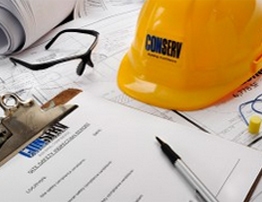
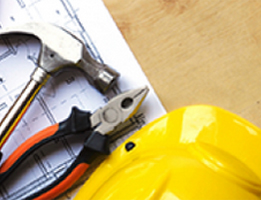


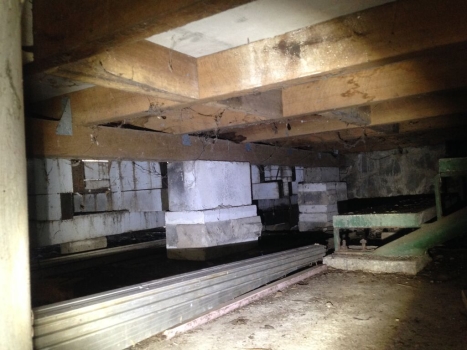


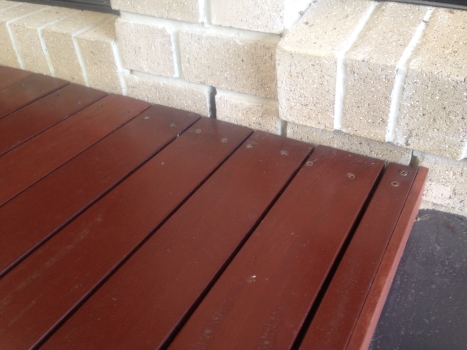
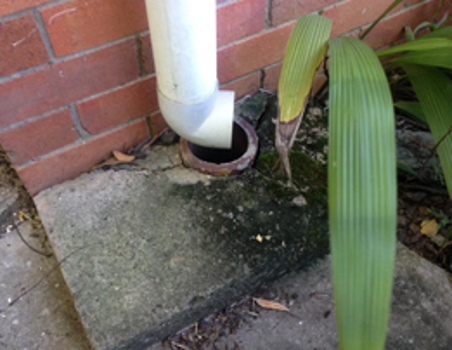 All too often during our inspections we identify areas which are conducive to the collection of retained ground moisture near a structure. Elevated moisture levels are known to provide conditions favourable to Timber Pest activity, particularly termites, and it is vital that every effort be made to avoid these risks. The most common causes of retained ground moisture are inadequate surface water drainage, downpipes not connected to drainage outlets, no gutters in place for roofing areas, outlet pipes for air conditioners, relief and overflow valves for hot water cylinders, corroding and join leakages of gutters and downpipes, defective or incomplete flashing and plumbing for rainwater tanks leaking. These are all issues which can be, and should be rectified, if they are in existence at a property.
All too often during our inspections we identify areas which are conducive to the collection of retained ground moisture near a structure. Elevated moisture levels are known to provide conditions favourable to Timber Pest activity, particularly termites, and it is vital that every effort be made to avoid these risks. The most common causes of retained ground moisture are inadequate surface water drainage, downpipes not connected to drainage outlets, no gutters in place for roofing areas, outlet pipes for air conditioners, relief and overflow valves for hot water cylinders, corroding and join leakages of gutters and downpipes, defective or incomplete flashing and plumbing for rainwater tanks leaking. These are all issues which can be, and should be rectified, if they are in existence at a property.




